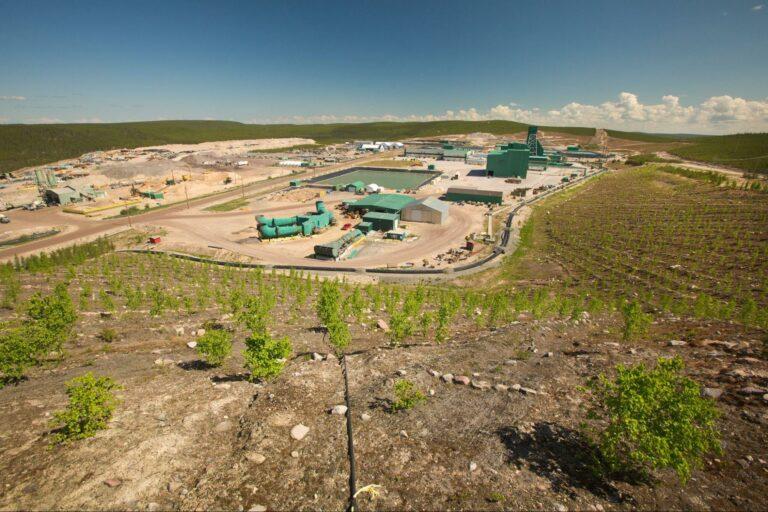International Minerals Innovation Institute
Sustainable Mining Practices in Saskatchewan: Supporting Economic Growth and Environmental Stewardship

Saskatchewan mining practices are top-tier when it comes to sustainability—in fact, we have adopted some of the most sustainable technologies, practices, and systems in the world. As leading global producers of key minerals like potash and uranium, the Saskatchewan minerals industry has the opportunity to continue providing those minerals while focusing on environmental stewardship.
Sustainability in the Saskatchewan Minerals Industry
There are a handful of potential concerns when it comes to mining operations, such as water use, land use, energy use and possible releases to water, land and air (including GHG emissions) Saskatchewan-based mining companies are investing in sustainable practices to address these concerns.
These solutions come in many forms:
- Environmental planning and management – predicting the potential for effects and taking steps to mitigate the likelihood or severity of such effects to minimize their impacts on adjacent lands or waters, and for the reclamation of lands so they may support other uses in the future.
- Innovative technologies for treating water, capturing emissions, managing tailings, and reducing energy consumption.
- Taking an inventory of processes, and making adjustments for increased efficiency and reduced environmental footprint, such as adopting lower impact mining techniques, buying eco-friendly equipment, focusing on energy efficiency
- Making ESG commitments with respect to energy and water use.
These are just a handful of initiatives addressing the environmental challenges with mining processes. More innovative solutions and ventures are introduced to the industry all the time, with competitions and pitching contests moving many of these projects forward to testing and application.
Sustainable Minerals Projects and Initiatives
Now that we’ve covered some of the high-level concerns, let’s talk about how Saskatchewan minerals companies are making a difference.
Mosaic has an impressive set of goals within its 2025 ESG targets, and they’re making progress! They’re currently working on reducing freshwater use and GHG emissions by 20% per tonne of potash produced. They are also tackling reduced energy use through behavioural shifts, renewable alternatives, and increased efficiency.
Nutrien is also part of this movement. As the largest producers of potash in the world, they are addressing sustainability by increasing energy efficiency and environmental protection. They have partnered with SaskPower to address energy use, utilizing waste heat to produce steam for mining operations.
Cameco is making a difference in two main ways: recycling non-radioactive waste rock and lowering landfill waste by 30% through repurposing, recycling, incinerating, or reprocessing.
The Economic Status of the Saskatchewan Minerals Industry
The economic value of the Saskatchewan minerals industry is formidable, with our province being the most desirable location for mining investment. We are rich in key mineral resources, enjoy an efficient regulatory system, and have a quality geological database. Impressively, 2022 saw record minerals sales at over $19.4 billion!
One major development when it comes to the economic value of the Saskatchewan minerals industry is automation. By automating many processes, mining companies both reduce safety risks to personnel and improve efficiency and production.
Another consideration is the overall transition towards a greener society, creating an increased need for critical minerals. Saskatchewan is home to 23 of 31 of these critical minerals including lithium, cobalt, copper, nickel and zinc. These minerals are used to manufacture electric car batteries, solar panels, medical and healthcare devices, mobile phones, and more. Demand for these critical minerals, as well as potash and uranium, is steady and increasing, and Saskatchewan has the resources and infrastructure to meet these needs.
Supporting Both the Economy and Environment
As the minerals industry shifts focus to innovative solutions for a lower environmental footprint, we see economic benefits and sustainability going hand-in-hand in many instances. For example, one major initiative has been to reduce energy consumption. This both reduces costs and benefits to the environment.
In addition, the more efficient processes are, the more minerals produced (improved bottom line) and the more the need for resources such as water and energy are reduced (sustainability win).
The IMII is proud to partner with many of the major Saskatchewan minerals companies making a difference for the environment while bolstering our province’s economy. We are also pleased to give innovative solutions companies opportunities to pitch, test, and apply their technologies within the minerals industry. Learn more about our ongoing partnerships and projects here and reach out if you’re interested in working with us!
Note: A statement from this blog has been removed due to an inability to verify.

